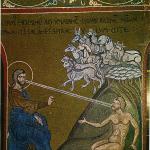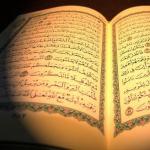When assessing the architecture of England, it is difficult to be overly delighted, since not everyone liked it. The fundamental factors of English architecture were concepts such as conservatism and rigor. Houses made in this style are traditionally considered one of the most fundamental, and therefore reliable. Among the buildings, it is almost impossible to find wooden or block buildings.
In most cases, houses in english style They are made of stone, they are very massive in appearance, and their period of operation is not limited by time. The facade of a private house in the English style is always very large; plaster or brick is used for finishing. The buildings have elegant design, because they combine fundamental power, exquisite sophistication and precision, nobility and luxury. Initially it may seem that you are not looking at english house ik, but a real medieval palace, which simultaneously attracts with its grandeur and repels with the coldness of its powerful walls.








Features of the facades of private houses made in the English style:
- The walls are built from natural stone or brick.
- Carved elements, drawings and patterns are simply not appropriate here.
- A required attribute is columns.
- Calm colors, no bright colors or accents.
- Asymmetry in the external appearance of a private house.
- An attic is required.
- The roof should have a large slope angle.
- The porch has minimum dimensions or completely absent.
- The area adjacent to the house should be decorated with trees and shrubs.
- In everything, neatness, precision and cleanliness of lines must be observed.
Overall on at the moment all English architecture is divided into three types, each of which developed in a particular historical period of time. Each of the directions has its own basics and characteristics, but at the same time, none of them can be combined with each other or with another style. All branches of English architecture have certain elements inherent in them; no one is allowed to violate the boundaries of style.










Victorian era: decor and bold color combinations
The Victorian branch of the English style recognizes the decorative decoration of the facade of the house and the use of contrasting colors. This style appeared at a time when people first began to pay attention to the convenience of housing, its appearance. Here they paid special attention comfort of living, layout and free space. With the help of artificial decorative items and their active production, the poor population was able to decorate their homes, making them more interesting and attractive.
Distinctive features of the Victorian style:
- The roof structure has steep slopes.
- A complex asymmetry can be seen here due to the large accumulation of small details.
- The pediment “creeps” onto the façade of a private house.
- Turrets have different shapes and sizes.
- Spacious veranda.
- The walls are decorated with siding or stone.
- They actively use stucco molding, patterns and ornaments.
- Bay windows break up the space and protrude beyond the façade.
- Decorative consoles and supports.










One of the main parameters that immediately “give away” the Victorian house were the large and rounded windows that protruded far beyond the facade; they were somewhat reminiscent of the portholes of a ship. Thus, English citizens saluted and expressed gratitude to the fleet, which discovered new lands and enriched their country.
Stained glass and forged metal elements were also used for decoration. A modern Victorian house is clad in clinker panels, brick or shingles. All decorative details (windows, doors and cornices) are painted in colors that will contrast with the walls.










Tudor houses
Small and something fairy houses, which existed in the Tudor era, received their own style direction, as they have an unsurpassed appearance, which has no analogues. In fact, the buildings had a rough and brutal appearance, and they were distinguished by the following features:
- The masonry of the house is made of red brick.
- Large chimney pipe (in most cases it was located closer to the facade).
- Little ones dormer windows.
- Lack of any symmetry.
- High gables, which also lack symmetry.
- The roof structure has uneven edges and steep slopes (in some cases, imitation straw was made).
- The entrance to the house is designed in the form of an arch, lined with large stones.
The whole point of the façade of a private house in the Tudor style is the lack of finishing, since a solid brickwork.






Georgian architecture: simplicity and luxury in the exterior of a private house
Georgian style is a modern urban style not only in England itself, but throughout the UK. This majestic, pompous and respectable style, combining luxury and simplicity, has long won the hearts of all Englishmen. The capital of England (London) is almost 100% built up with buildings made in this style.
Distinctive features of the pompous Georgian style:
- The presence of symmetry, its strict adherence.
- Straight lines, angles, clear lines.
- Windows of the same height and width are located evenly throughout the house.
- No special decorations.
- Brickwork.
- In the classic case of building a house in this style, the main facade of the building contains 5 windows.
- The entrance has a portico and is quite low.
- The roof has a slight slope angle, is located almost flush with the walls, and there are practically no overhangs.
- Twin chimneys.
- There are decorative semi-columns on both sides of the door.
The facade of a private Georgian house combines Renaissance and antiquity. It is not difficult to find a place for cornices, stucco moldings, sculptures and moldings that can decorate any home. When creating modern houses in the English style they use polyurethane products, with the help of which they imitate plaster stucco or decorative stonework. The brickwork is replaced with a clinker thermal panel. The only thing that has remained timeless is the plastering of the external walls.

























A house in the English style would be quite appropriate to call it classic. Restraint and elegance are the main features that are inherent in these styles. The traditional English style still contains a certain aristocracy. IN modern world It is quite difficult to adhere to one style in the design of your home, but in our article we will still try to figure out how to skillfully combine the basic elements of the English style with functionality, while maintaining harmony. And the 33 photos that accompany the material perfectly illustrate the depth of the presented style visually.
Correct facade of a house in English style
Construction of a private house involves preliminary planning of external and interior work, in which facade decoration plays a very important role. The facade of a house in the English style is, first of all, austerity and conservatism; it has many of its own features that should not be neglected. The facades of English-style houses are noticeably original finishing materials and special decorative elements.




The most popular varieties of English style:
- Gregorian
- Victorian
- Tudor
Gregorian style
In the Gregorian style, the motifs of ancient architecture are quite noticeable. As a rule, houses in this style are two-story. The first floor of the house has a high base and wall coverings in the form of cornices and moldings. The doors are made of wood, sometimes with small windows at the top.
The walls are most often made of red brick, visually a certain classic house made of brick in the English style, reminiscent of a fairy-tale construction from the Middle Ages. The presence of artificial or wild stone in the facade of the house is also a clear characteristic of the style. Facade cladding is often found using foam or polyurethane. These materials are light in weight and quite versatile, they are easy to paint. natural materials.





Victorian style
This style is characterized by symmetry with the entrance at the center. Ceilings in houses in victorian style low, based on this, the windows of the second floor are also located quite low. The windows themselves are round in shape. The roof of the house is covered with slate and symmetrical pipes, cone-shaped towers and cylindrical buildings are used as decorations. The facade of the house in the English style has such striking differences as: stained glass windows, mosaic masonry and figured forging. Direct finishing of the house is done using brickwork. Cornices, doors and window transitions are made in contrasting colors.





Tudor style
As with the previous two, the Tudor-style facade uses brickwork. The masonry is done according to the castle type, and half-timbered walls are also used to fill the walls wooden frame brick or stone material.
In houses made in the Tudor style, the presence of a porch is not accepted; instead, a small canopy is built, which is decorated with climbing vegetation.





English style house: design features of the roof and foundation
In such houses there is practically no foundation; the floor is laid almost on the ground layer of earth. It is not customary to display a garage, so it is built in the middle of the site. It is also unacceptable to build separate sheds for the garage and make it adjacent to the wall of a residential building. The facade of English-style houses has a high roof. The most popular materials for roof construction are slate, tiles and even straw.
Previously, a roof made of natural materials spoke of decadence financial situation owners, and now such roofing is highly valued and considered environmentally friendly. Vivid features English style roofs are sharp and high.


Interior of an English-style house: key elements and characteristics of the style
Mahogany can easily be called an essential element of the interior of a house in the English style. Expensive and elegant material, perfect for furniture and interior decoration. Plain walls Traditionally they are decorated with paintings or tapestries. Windows play a special role; they are always covered with rich multi-layer curtains, decorated with veils, draperies and lacing.
The interior of the English-style house is traditionally decorated in brown, gray, olive and white. There are several elements thanks to which an English-style house cannot be confused with anything else.
Fireplace - what would an English house be without a fireplace? In cold and damp weather conditions, it performs not only an aesthetic function, but also a practical one. The best option there will be a real fireplace, not an electric one, but it all depends on the capabilities of the living space. Most often, the fireplace becomes the center of the room, starting from it the sofa, armchairs and other furniture will be placed.
Also, almost no English home is complete without a library. It could be a whole separate room, a rack or just a few shelves. An excellent addition to the library would be several armchairs and coffee table.
And the last obligatory element of the English style is the cage. This pattern is very often used in textiles. It is quite bright and stands out against the background of other interior elements.











Perhaps many will consider the interior of an English-style house too restrained and conservative, but not fans of the classics. If a book, a fireplace and a cup of tea are your ideal evening, then the English style is made for you.
English style house - classic, sophistication and beauty in 33 photos updated: September 14, 2017 by: Valeria Likhovaya
Each of us, sooner or later, thinks about settling down somewhere outside the city, having our own plot and our own family nest. When planning our future place of residence, we involuntarily follow the famous proverb: “My home is my castle.” Typically, families want to live in homes that are large and forbidding on the outside, but elegant and cozy on the inside. It is these qualities that buildings in the English style meet.




Peculiarities
Traditional English architecture developed in the 17th century, when England occupied a dominant position among European countries. She personified, first of all, power and strength, but with the inherent restraint and conservatism of the British. It should also be noted that the British, three hundred years ago, tried to combine beauty and comfort in their homes.
Country buildings in the spirit of old England often look like castles, characteristic feature which is a combination of conciseness and luxury.


The following features of buildings in the English style can be distinguished:
- predominance of natural materials;
- windows are most often located at the bottom of the wall;
- panoramic windows to create a light-filled room;
- the roof is usually high, has a sharp shape and several slopes;
- use of awnings as architectural detail;
- simplicity of form, clear and restrained lines;
- the presence of small terraces and adjacent lawns.




Dimensions
A classic two-story castle in the spirit of the Tudor era is brutal and impressive; such a house can safely be called an impregnable fortress. The construction of Gregorian style houses is based on simplicity and sophistication. Small one-story buildings in a rustic spirit with a porch or terrace are common. The Victorian mansion can be distinguished from all the others by its impressive size and abundance of decor. Such a country house looks luxurious and pompous.



Exterior options
The exterior of the Tudor mansion has a rather gloomy appearance - thick and impregnable walls, lancet windows and majestic pediments and buttresses. There must be a chimney rising above the house. The windows are small, but there are many of them. The roof has steep slopes, so general view slightly asymmetrical.
Gregorian houses are symmetrical and there are many windows. elongated shape, decorated with arches. Brick is the main material for the construction of such houses. A mandatory detail is a pediment in the central part and pilasters on the sides.


Victorian country houses are richly decorated with carvings and corbels on the façade. The overall appearance is slightly asymmetrical, which is due to the large number of turrets and extensions, as well as the acutely angled, broken-shaped roof.
Particular attention should be paid to the general appearance of the house and the area adjacent to it. Little house V rustic style will perfectly complement a modest fence and a small garden in front of the house. Required condition is to respect landscape traditions and create the effect of nature untouched by man. Large country mansions will be perfectly complemented by flat paving slabs, built-in garage and neatly trimmed trees.


Facade
When building an English-style mansion, several types of materials are often used, for example, clinker brick and stone. A special highlight country house High gables and walls lined with uneven stone or hand-made bricks will add to the look. Finished projects modern houses amaze with their diversity; architects skillfully combine natural materials, traditional canons and new innovations in construction. This creates a functional and meaningful classic.


Gregorian-style buildings are devoid of decoration, but greenery and ivy twining brick facade at home, it saves the situation perfectly. The façade takes on a neat appearance thanks to low foundation, discreet shades, as well as a tiled roof. But an elegant chimney is usually made of stone; this contrast is the unsurpassed feature of English architecture. As for color, preference is given to a dark gray roof and light gray walls. Would be a great addition wooden terrace around the house, which will offer a wonderful view of the lawn or pond. The buildings made of red brick look impressive, reminding us of the castles of fairy-tale heroes.


Roof
An intricate and eye-catching roof dominates the entire exterior of an English mansion. As a rule, it is unique in every home, and this is what makes it remarkable. Sharp inclinations are not at all a whim of the English aristocracy. First of all, such a layout was created based on the harsh natural conditions England, it is necessary to protect the facade of a private mansion from unfavorable humidity and dampness.
The roof takes up most of the building, but there are no attics, so it is quite common to find small attic-type spaces for old trinkets and tools.


Windows
An important point in the design are large panoramic windows. In addition to panoramic windows, multi-leaf windows with interlacing are often found. As a rule, traditional window openings, they are placed slightly lower than usual. If the project allows, then creating a second light would be an excellent architectural technique.


Interior decoration
English interior is rightfully considered one of the most complex and difficult to recreate. It's all because of this characteristic feature, as eclecticism, or, in other words, a mixture of styles. Traditional English interior associated with the name of Queen Victoria. During this era, Asian motifs, romantic subjects, and reference to the details of the Baroque and Gothic periods were especially popular. Thanks to the thoughtful plans of the architects, all these contrasting elements merged perfectly into a solemn British interior.


To create an interior in the English style, you must use natural materials , while it is enough high quality. The English style is characterized by the presence large quantity tree. This includes doors made of dark wood, flooring, baseboards, cornices, as well as wall cladding wood panels, which goes perfectly with the wallpaper.
Modern technologies make it possible to use panels that imitate wood, which has a positive effect on the wallet.


Ceiling
The ceiling is usually painted white, a cornice runs along the edges. Walls and ceilings are often decorated with stucco. Ceiling painting is often very skillfully done, which is a distinctive technique in English interior design. In the kitchen and bedroom, wooden beams that imitate ancient ceilings would look appropriate. Sometimes instead wooden beams use plastic analogues.


Walls
In addition to wall cladding with panels, in interiors English houses Wallpaper is widespread. Winning options would be wallpaper with tartan colors and wallpaper with wide stripes. Preferred colors It is considered dark red and dark green. Don't forget about the rustic style. Wallpaper is perfect for decorating the kitchen and living room. small flower, with rosebuds or with simple ornaments - Indian motifs, birds, exotic flowers.
Quite often there is a combination of two favorite elements - wallpaper on top and wooden panels below.


Floor
The floor is covered with tiles light colors. Parquet flooring made from dark wood species is typical for offices and living rooms. You can often find carpets and small rugs; this detail creates coziness and warmth. hearth and home. The British pay much more attention to the cleanliness of the floor, but do not forget that flooring should fit into the interior and not spoil the overall appearance of the room and the whole house.


Furniture
It’s hard to imagine a traditional English interior without a sofa. English quilted sofas are produced according to special technology Chesterfield - this name is generally accepted for of this type sofas and is known all over the world. Also, it is impossible to imagine a British interior without a large fireplace in the living room. It is not only an important accent of the interior, but also a gathering place for all household members. Decorate the fireplace beautiful stone or valuable species tree.



It is worth noting that shelving will fit perfectly into an English-style interior, bookshelves, coffee table made of dark wood. A variety of books will perfectly complement the interior. It would be appropriate to place a couple of identical tables in the hall different sizes, hang pictures on the walls, which will create the atmosphere of an old salon.
Pay attention to details– many paintings in gilded frames, a soft footstool upholstered in velvet, a stand for fireplace appliances and umbrellas. All this will add elegance to your interior. Dilute the severity and richness with bright, heavy curtains or organize your winter garden on the windowsill by placing flowers in beautiful pots there.



When choosing a bed, you should pay attention to massive models with an unusual canopy. The bedroom decoration will be perfectly complemented by a round bedside table, several crystal lamps, as well as a simple wardrobe. A variety of curtains and decorative pillows will help you decorate your bedroom.
The kitchen interior is subordinated household appliances which is located there. But main feature kitchens in the English style is that the equipment must be hidden, if possible, from the eyes of those entering. This can be achieved by masking the refrigerator or stove by cladding, and dishwasher and make the sink built-in. Particularly popular on modern market uses vintage household appliances.


Lighting
Decorative lighting in the British interior includes candles in candlesticks and candelabra, crystal candlesticks, table lamps and sconce. It is worth mentioning the large panoramic windows, which let in much more light than regular windows, so the rooms look much lighter and more spacious.

The geology of the site includes checking and studying the soil, this allows you to optimize the cost of the foundation.
What happens if you don't do geology?
If you ignore this stage, then you can choose the wrong foundation and lose from 1,000,000 rubles on alterations.
10 year warranty on foundation, walls, ceilings and roofing.
Ask an engineer a question
What is included in the Engineering Solution?
Documentation on the location and equipment of all technical rooms, electrical points, water supply, ventilation, gas and sewerage.
What is included in a design solution?
Detailed plan and instructions for the foreman, which displays all necessary steps and technologies in the construction of foundations, walls and roofs.
What is included in the architectural solution?
Creation of a sketch and its 3D image, which shows the location and size of rooms, walls, roofing, furniture, windows and doors.
What will you get after this stage?
All technical and visual documentation. Author's supervision of the construction progress. Our architect and designer will visit the site weekly.
Still have questions? Ask them to an engineer.
Ask an engineer a question
What determines the timing?
The timing depends on the chosen project and material (houses made of logs and timber require time to shrink).
What is "house shrinkage"?
This is a natural process of volume change wooden walls and other parts due to drying of the wood.
Who will build my house?
We have our own staff of certified workers and foremen with at least 5 years of specialized experience. A fleet of construction equipment has been put into operation since 2015. We do not involve contractors.
Still have questions? Ask them to an engineer.
Ask an engineer a question
I want it like in this picture. Can you?
Yes! You can send us any image and we will design and build what you want.
Do you have a designer on your staff?
Currently there are 5 interior designers on staff with a total of 74 years of specialized experience.
What is included in an interior design project?
Drawing up a 3D project by a designer, as well as support and implementation of all finishing works.
We will also produce and supply furniture that suits your lifestyle and taste.
Our clients constantly talk about “English style” houses. And each of them means something different. It's time to deal with English houses. Let's clarify.
Let's get rid of excessive detailing of styles and historical vicissitudes. Let's cut off the majestic castles and huge residences. Fortunately, everything fits into a simple scheme. In the “classical” suburban private architecture of England, three periods can be distinguished, in which three images emerged residential buildings. If we hear about an English-style house, we are most likely talking about one of these three images.
It should be noted here that all these once established styles are readily repeated by the modern generation of architects and are willingly bought by homeowners. They do not mix, because each has its own canons, which cannot be crossed without leaving the boundaries of style - English styles are very different.
Tudor style (1500-1600)
A rustic medieval English house from fairy tales. The style turned out to be persistent, despite the order architecture of the Italians, which penetrated everywhere into Britain.
Features of the English Tudor style are a brutal look. Very high gables on the main facade, often of different sizes. Huge pipe next to front door on the main facade or on the side. Arched entrance. Small dormers. Sometimes imitation thatched roof. In new versions of buildings, large bay windows are installed on the facades.



Features of the Tudor style
- Very high gables
- A steep roof, often with a broken edge.
- Dedicated pipe, often on the main façade
- Windows with small glazing
- Asymmetrical plan and general view
- Small dormers
- The main entrance is often paved with large stones
Examples of Tudor style houses in our facade database.
Georgian style 1700-1800
It can be said that this is a democratic version of the Palladian style, which was used in England at the same time in stately residences. The style is serious, sometimes even looks pompous, but at the same time it is quite simple.
These are the kind of houses London is made of. Georgian is the urban English style of modern Great Britain. The Georgian style can be traced even with its bold modifications. Most often, it is this style that our compatriots mean when they mention the English style.



Even if the facade is asymmetrical, in the old urban areas of London
Georgian style is still readable.
Examples of Georgian houses in our database of facades.
Features of the Georgian style
- Rectangular, symmetrical plan.
- Uniform distribution and size of all windows.
- Brick, sparsely decorated walls,
- Low-set entrance with portico or crown
- Roof slopes are medium in height.
- Minimum extension of the roof over the walls.
- Five windows on the main facade (in classic version)
- Paired pipes
- Pilasters on the sides of the door
- Doors with panels
Victorian 1800-1900
At this time, construction in England was not regulated by the state, as, for example, in France, so young English architects willingly practiced on private houses. Lots of practice led to free composition. The architects paid attention to the internal comfort of the house and the diversity social roles residents. Less attention attention began to be paid to the external attractiveness of the house, Palladian and generally Italian order canons began to be supplanted in favor of a convenient layout.
Industrial Revolution and mass production decorative elements made it possible to decorate even relatively poor possessions. Hence the general decorativeness of the facades. Most bright style victorian era- Queen Anne style.



Victorian style features
- Steep roof
- Complex asymmetrical shape
- Gable (pediment) facing the main facade
- Veranda framing one or two sides of the house
- Turret (round or square)
- The walls are decorated with stone, half-timbered or siding)
- Ornamental patterns
- Bay windows
- Decorative consoles
View examples of Victorian houses in our elevation database.
If you know these three English styles, consider that you will recognize all the classical English architecture. Perhaps, to expand our cultural horizons, next time we’ll talk about


















